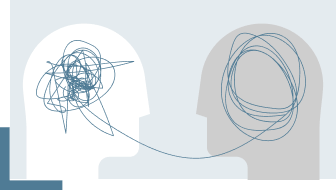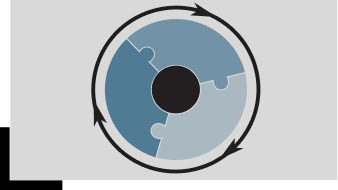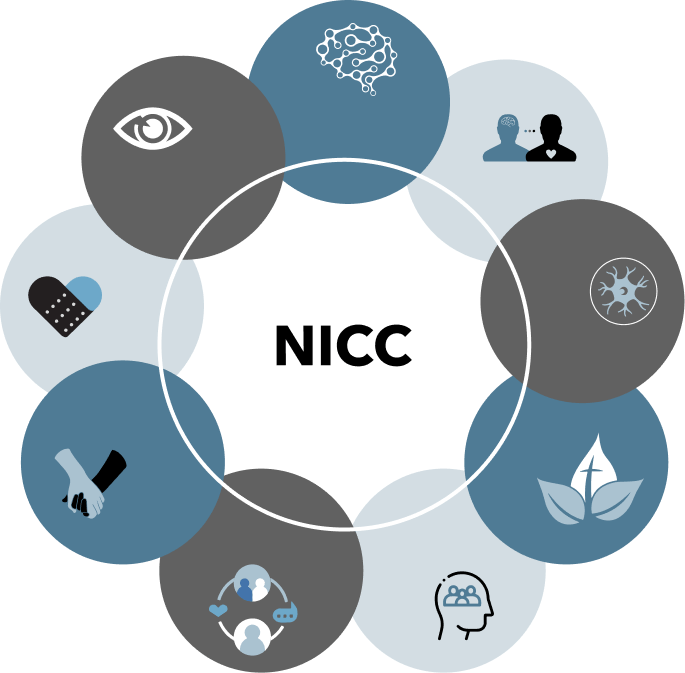Faith-Based Online Therapy
Neuroscience Informed Christian Counseling® (NICC)
The MyCounselor Way
Neuroscience Informed Christian Counseling (NICC) was developed by Josh Spurlock, MA, LPC, LMHC, CST out of the thousands of hours of clincal care delivered through MyCounselor.Online over the past ten years.
NICC was created to help us help others. NICC provides a simple yet comprehensive framework for understanding people and their problems. Rooted in neuroscience and the timeless truths of the Bible, it gives a trustworthy map for navigating how to help. NICC takes the mystery out of transforming trauma into Thriving by providing clear, simple, well-defined pathways and signposts for meaningful change.
NICC is largely a translational and integrative model. Building on and emerging from well-developed and researched models of therapy and Biblical soul care wisdom practiced for millennia. The result is a distinctly Christian clinical model articulated precisely for training, supervision, and research.
NICC’s understanding of the human psyche is to a large degree informed by attachment theory, interpersonal neurobiology, emotion theory, and transformational studies. Influential models include Accelerated Experiential Dynamic Psychotherapy (AEDP), Emotionally Focused Therapy (EFT), Schema Therapy, Coherence Therapy, Internal Family Systems (IFS), and Attachment Focused Eye Movement Desensitization and Reprocessing (AF-EMDR).
The most significant differentiator for NICC from the psychological models it draws from is the fundamental belief in the intelligent design of the nervous system by the creator God of the Bible. This serves as the starting place for NICC’s conceptual model and the lens through which neuroscience and psychological research findings are interpreted.
Theologically NICC’s understanding draws from Evangelical theologians such as Wayne Grudem, Stanley Horton, Dallas Willard, Gordon Fee, F.F. Bruce, Harold Hoehner, William Klien, Craig Blomberg, J. Scott Duvall, J. Daniel Hays, Thomas Schreiner, D.A. Carson, Darrell Bock, Douglas Moo, Craig Keener, N.T. Wright, and study resources including the BDAG lexicon, TDNT, TDOT, NIGTC, Dictionary of Paul and His Letters, and others of this tradition. We also look to contemplative Christian practices of spiritual formation and direction influenced by Ignatius of Loyola and others.
It should be noted that the principles of change put forward in NICC have been empirically validated in the models we draw from. They work. They work because they engage mechanisms of healing and change designed into the nervous system by our Creator, whether or not these models acknowledge the Creator. In NICC, we acknowledge the Creator and offer a neurotheological explanation for why our model works both neurologically and spiritually. We do so humbly, certain we are wrong about many things. We see now through a glass dimly.
NICC is an accelerated pathway to counseling, competence, and confidence, by giving you:

Simple, yet comprehensive framework for understanding people and their problems

Trustworthy map for navigating how to help - taking the mystery out of transforming trauma into thriving

Clear, simple and defined pathways and sign posts for change

System for accelerating the development of your counseling intuition and ‘trust your gut’ skills
The Theology Behind NICC
The following list represents a brief bibliography of theological writings that influence Neuroscience Informed Christian Counseling® (NICC).
The list is not exhaustive and does not represent an embrace or endorsement of every perspective taken by the authors.
The Neuroscience Behind NICC
NICC theory and practice is grounded in the scientific research of mental health over the past one hundred years and the study of God over the preceding six plus millennia. The NICC Provider Manual covers in detail the neuroscience and theology of NICC. In this overview of the neuroscience behind NICC we will simply name the various theories and models that NICC draws on, with limited discussion of their influence on the model. We’ll organize the material in reverse chronological order, starting with the state-of-the-art evidenced based models and trace back to their earlier anecdotal theorist.

The leading developer for Accelerated Experiential Dynamic Psychotherapy (AEDP) is Diana Fosha. From AEDP we draw our focus on the phenomenology of affective experience, the primacy of affect in creating change, the operationalization of our therapeutic stance, understanding of anxiety, defense, and core affective experience, the mechanics of processing emotion to completion, meta-therapeutic processing, and a model of supervision based on direct observation of video, to name a few. In many ways NICC is a translation and expansion of AEDP and is primary in NICC’s application with individuals.
FURTHER STUDY IN AEDP
The leading developer for Emotion Focused Couples Therapy (EFT) is Susan Johnson. From EFT we draw our understanding of attachment driven interpersonal cycles of interaction, organization of therapeutic work into stages and steps, and restructuring bonds through restructured interpersonal enactments. EFT is primary source for NICC’s application with couples and families.
FURTHER STUDY IN EFT
The leading developer for Attachment Focused Eye Movement Desensitization and Reprocessing (AF-EMDR) is Laurel Parnell. From AF-EMDR we draw structuring of therapeutic work, use of imagery in processing traumatic memory, targeting and following of memory networks, verifying completion of processing, understanding of Adaptive Information Processing (AIP), and resource development through imagery work.
FURTHER STUDY IN AF-EMDR
The leading developer for Internal Family Systems (IFS) is Richard Schwartz. From IFS we draw our understanding of parts work and ego states.
FURTHER STUDY IN IFS
The leading developer for Schema Therapy is Jeffery Young. From Schema Therapy we draw limited reparenting and early maladaptive schemas.
FURTHER STUDY IN IFS
The leading developer for IPNB is Daniel Siegel. From IPNB we draw our understanding of nervous system anatomy and function, mental health as whole brain integration, theory of mind, self-reflective capacity, and intersubjectivity.
FURTHER STUDY IN IPNB
The leading developer in Polyvagal Theory is Stephen Porges. From Polyvagal theory we draw our understanding of vagal nervous system states and window of tolerance.
FURTHER STUDY IN POLYVAGAL THEORY
The leading developer in Right Brain Psychotherapy is Allan Schore. From Right Brain Psychotherapy we draw our understanding of limbic resonance, regulation, and revision.
FURTHER STUDY IN RIGHT BRAIN PSYCHOTHERAPY
The leading developer for Memory Reconsolidation is Bruce Ecker. From Memory Reconsolidation we draw our understanding of the therapeutic reconsolidation process, transformation sequence, and the role of mismatching experiences.
FURTHER STUDY IN MEMORY RECONSOLIDATION
The leading developer in Trauma Informed Practice is Bessel van der Kolk. From Trauma Informed Practice we draw our understanding of trauma’s effect on the nervous system and trauma symptomology as protective features of the body.
FURTHER STUDY IN TRAUMA INFORMED PRACTICE
Legacy Theories
The modern theories and models in neuroscience build and expand on the work of earlier theorist who lacked the scientific measuring tools to ground their findings in direct observation of the nervous system or to conduct widespread controlled studies. Still their keen observation and experiments in treatment have made meaningful contribution to our understanding. While NICC strongly disagrees with some of the conclusion these theorists drew from their observations, we find value in their observations when understood through the lens of the Bible.





